Temperature Field of Tool Engaged Cutting Zone for Milling of Titanium Alloy with Ball-End Milling
Abstract
:1. Introduction
2. Experimental Study
2.1. Aims
2.2. Equipment and Procedure
3. Calculation of the Heat Flux Density Function for the Contact Region between the Chip and the Workpiece
3.1. Analysis of the Heat Source
3.2. The Average Temperature in the Contact Area
3.3. Calculation of the Heat Flux Density Function
3.4. The Heat Destiny Function
4. Simulation of the Temperature Field
4.1. Establishing the Simulation Model
4.2. The Boundary Conditions and Loads
4.3. Temperature Field Simulation
4.4. Thermal Stress Simulation
5. Conclusions
Author Contributions
Funding
Acknowledgments
Conflicts of Interest
References
- Geng, G.; Xu, J.; Fu, Y. Study of cutting temperature in high speed milling of a close α titanium alloy. Mech. Sci. Technol. 2006, 22, 328–340. [Google Scholar]
- Xu, S. The relation between cutting temperature and tool wear. J. Luoyang Inst. Technol. 1995, 2, 30–33. [Google Scholar]
- Liu, Z.; Huang, C.; Wan, Y. Summary of Cutting Temperature Measurement Methods. Tool Eng. 2002, 36, 3–6. [Google Scholar]
- Hirao, M. Determining Temperature Distribution on Flank Face of Cutting Tool. Shap. Technol. 1998, 6, 143–148. [Google Scholar] [CrossRef]
- Taminiau, D.A.; Dautzenberg, J.H. Temperature Measurement in Orthogonal Metal Cutting. Int. J. Adv. Manuf. Technol. 1998, 14, 7–12. [Google Scholar]
- Jaeger, J.C. Theoretical analysis on grinding temperature field. Proc. Soc. New South Wales 1942, 76, 203–224. [Google Scholar]
- Dong, L. Research on Cutting Mechanism and CAD/CAM of Three-Dimensional Groove Blade Face Milling Cutter; Harbin Institute of Technology: Harbin, China, 1999; pp. 1–8. [Google Scholar]
- Zhou, Z. Metal Tutting Theory; China Machine Press: Beijing, China, 1992; pp. 62–91. [Google Scholar]
- Guo, Q.; Tan, G.; Dong, L.; Li, Z. Mathematieal Model of Milling Tem Peraturefor Three-dimensional Groove Insert. J. Harbin Univ. Sci. Technol. 2000, 5, 33–36. [Google Scholar]
- Wang, Z.; Liu, L.; Wang, B.; Li, Z. The Experimental Research on Cutting Temperature and Adhesion Failure for Milling Insert with 3D Complex Groove. Cut. Technol. 2005, 4, 29–31. [Google Scholar]
- Xia, H. Research on Tool Real-Time Monitoring Based on Cutting Force and Cutting Temperature; Qingdao Technological University: Qingdao, China, 2010; pp. 69–72. [Google Scholar]
- Ren, C.; Hou, X.; Han, S. Research on Cutting Temperature of End Mill in High-speed Dry Cutting Based on Finite Element Simulation. Tool Eng. 2009, 43, 75–77. [Google Scholar]
- Wojciechowskia, S.; Chwalczuka, T.; Twardowskia, P.; Krolczykb, G.M. Modeling of cutter displacements during ball end milling of inclined surfaces. Arch. Civ. Mech. Eng. 2015, 15, 798–805. [Google Scholar] [CrossRef]
- Wojciechowskia, S.; Marudab, R.W.; Barransc, S.; Nieslonyd, P.; Krolczykd, G.M. Optimisation of machining parameters during ball end milling of hardened steel with various surface inclinations. Measurement 2017, 111, 18–28. [Google Scholar] [CrossRef]
- Wojciechowski, S.; Wiackiewicz, M.; Krolczyk, G.M. Study on metrological relations between instant tool displacements and surface roughness during precise ball end milling. Measurement 2018, 129, 686–694. [Google Scholar] [CrossRef]
- Chuang, F. Study on Wear of Cemented Carbide Ball End Milling Tool Based on Titanium Alloy Cutting; Harbin university of Science and Technology: Harbin, China, 2015. [Google Scholar]
- Li, Y. Research on the Performance of PCBN Tools in Interrupted Cutting; Dalian University of Technology: Dalian, China, 2009; pp. 51–54. [Google Scholar]
- Bareggi, A.; O’Donnell, G.E. Thermal and mechanical effects of high-speed impinging jet in orthogonal machining operations: Experimental, finite elements and analytical investigations. Proc. Inst. Mech. Eng. Part B J. Eng. Manuf. 2014, 229, 379–391. [Google Scholar] [CrossRef]
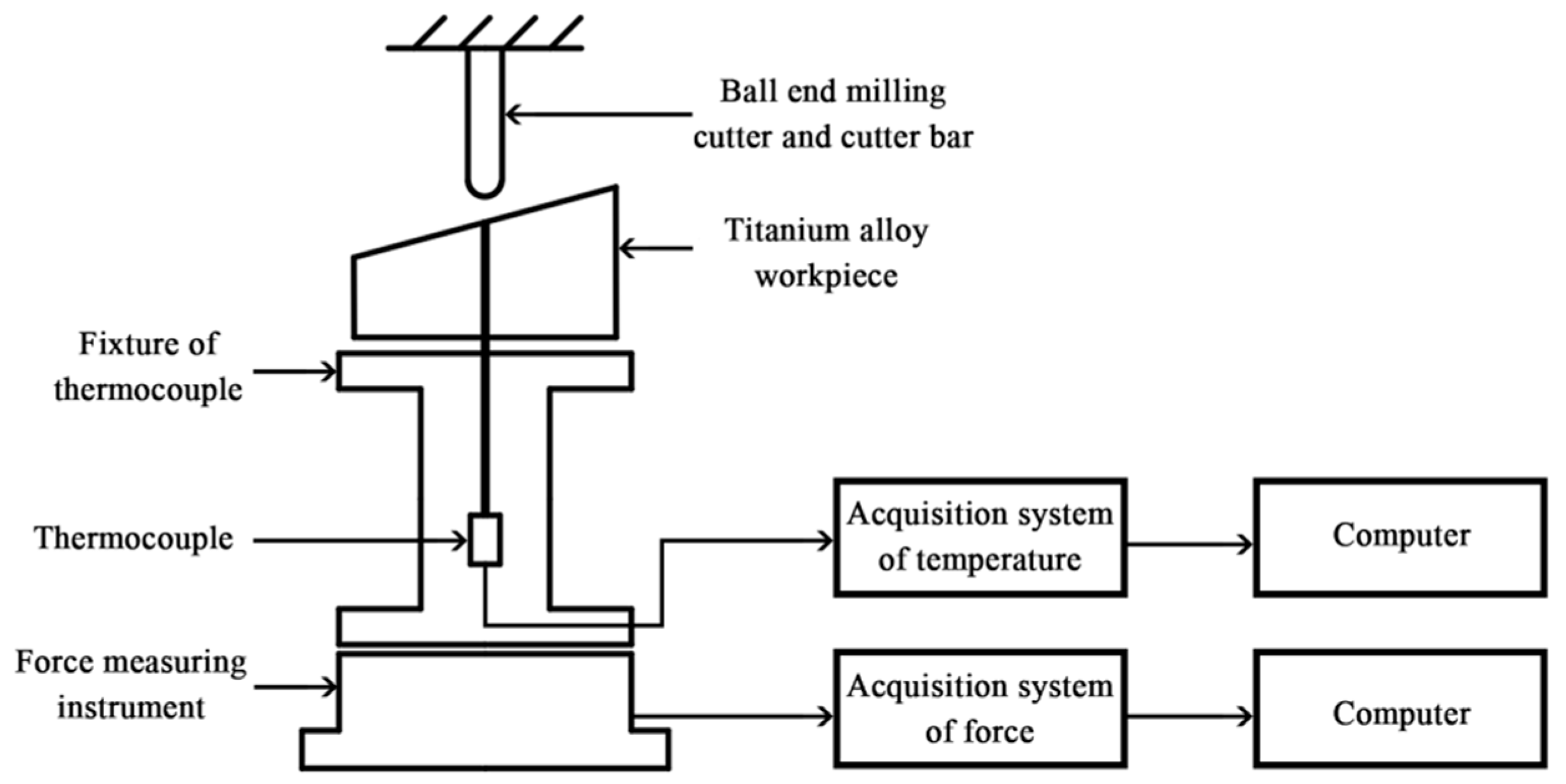


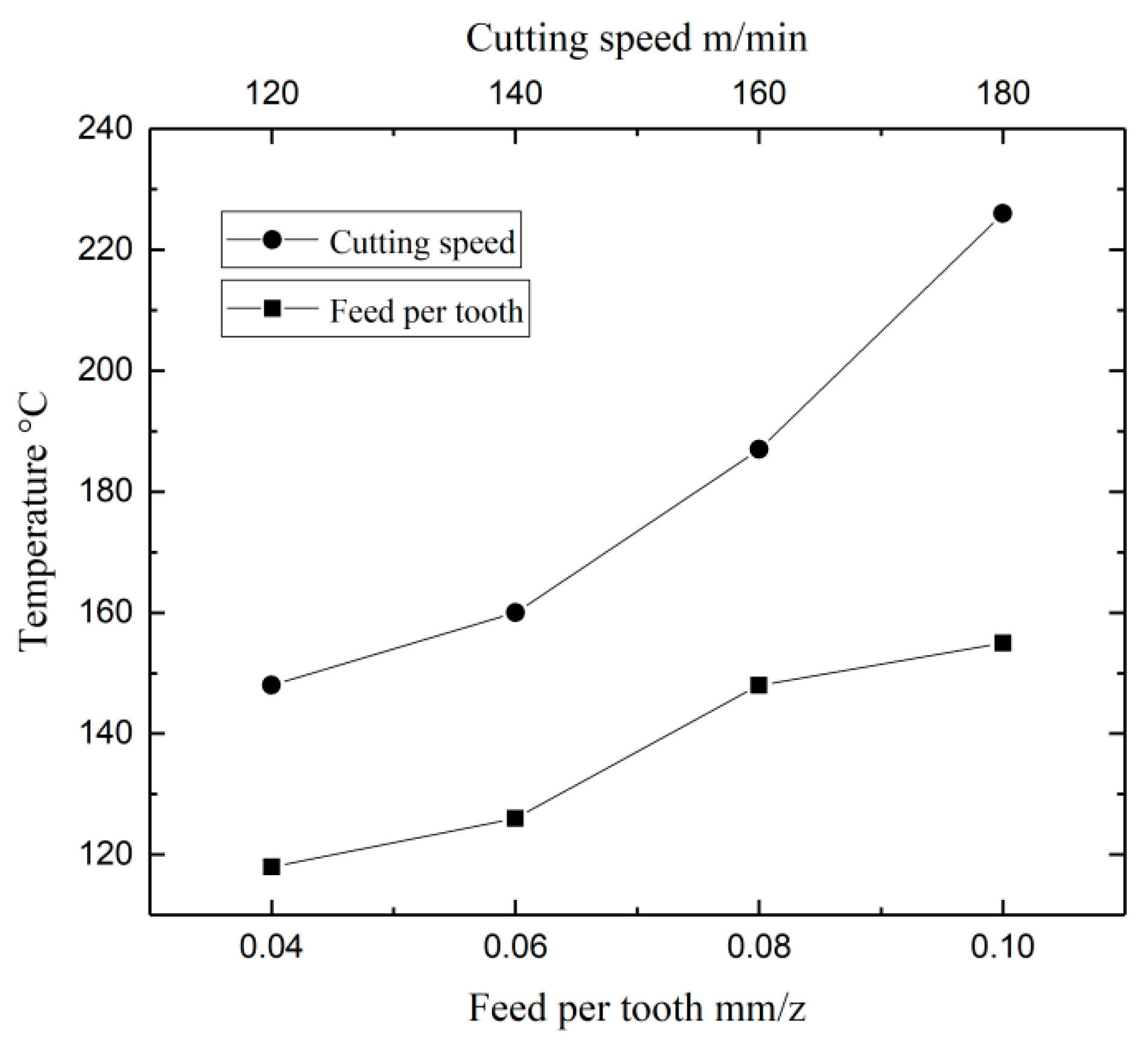
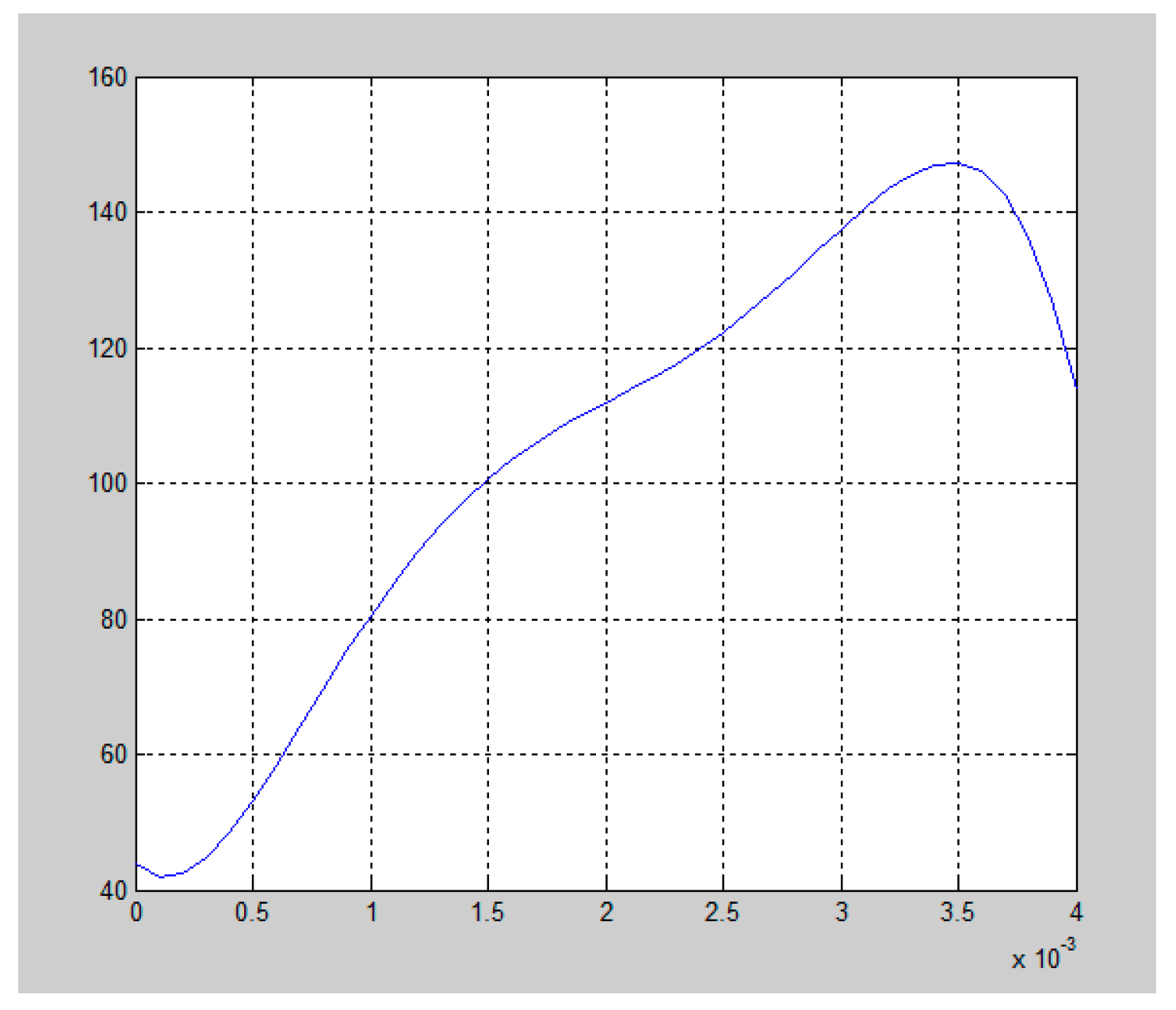
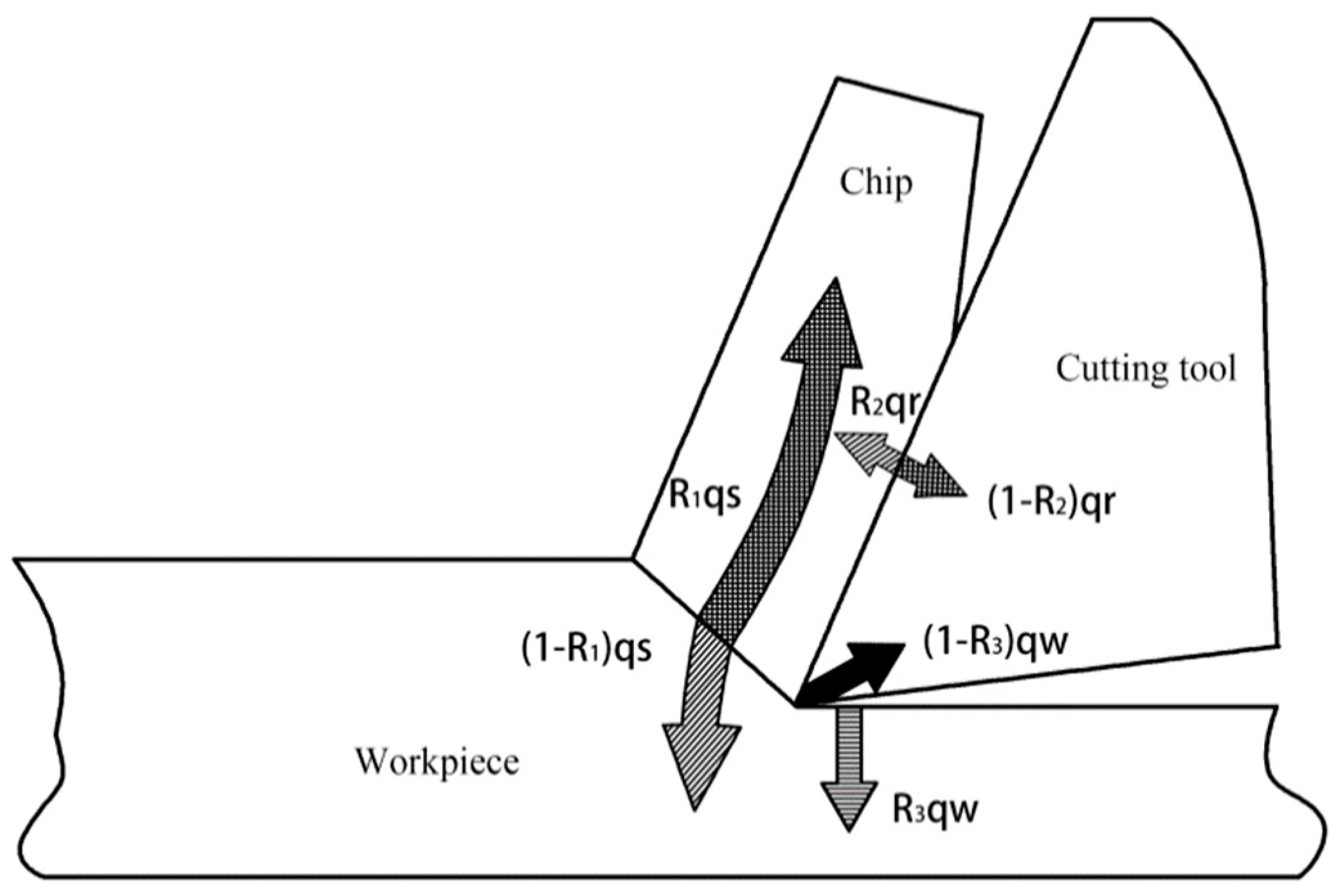
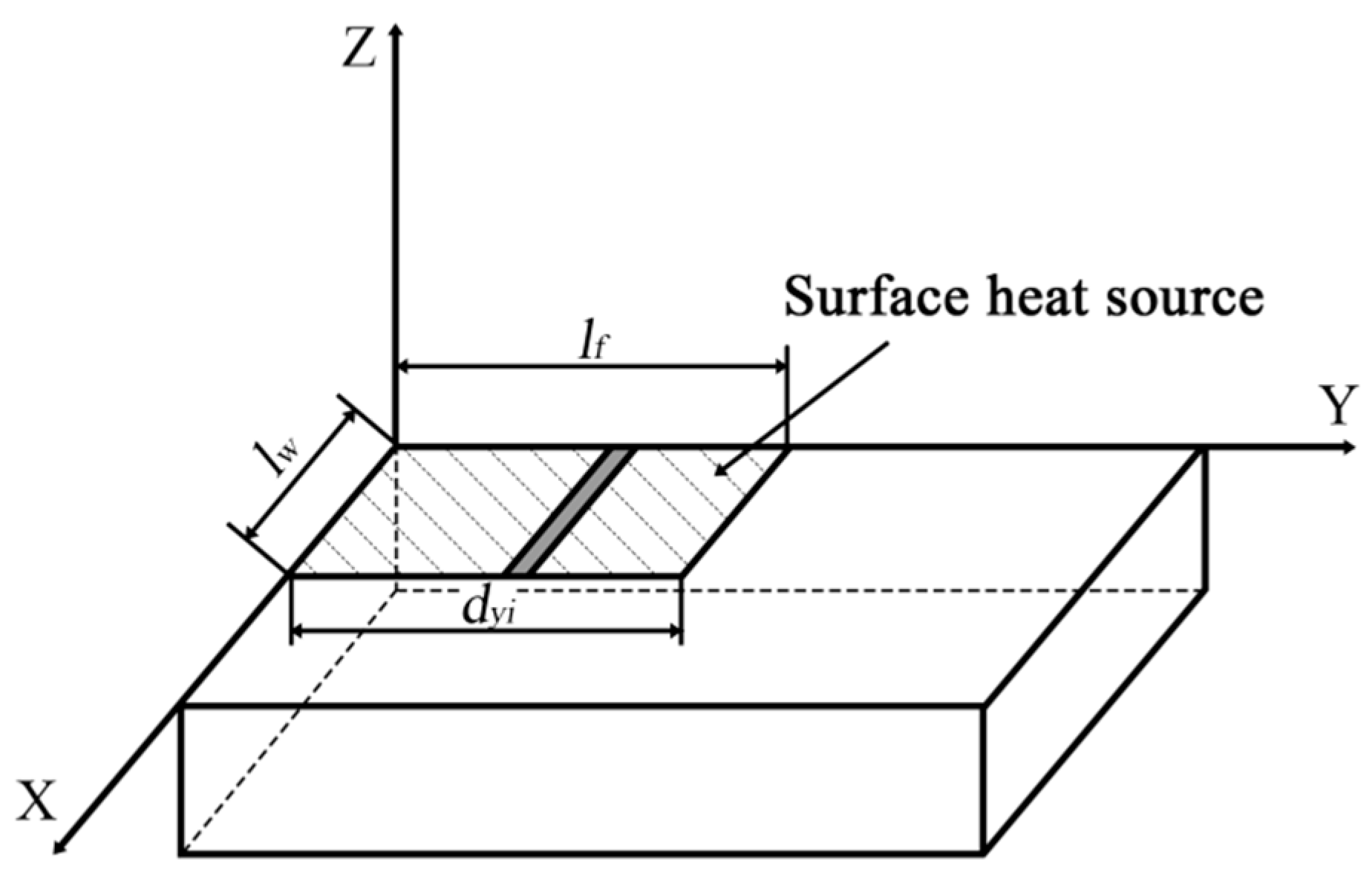

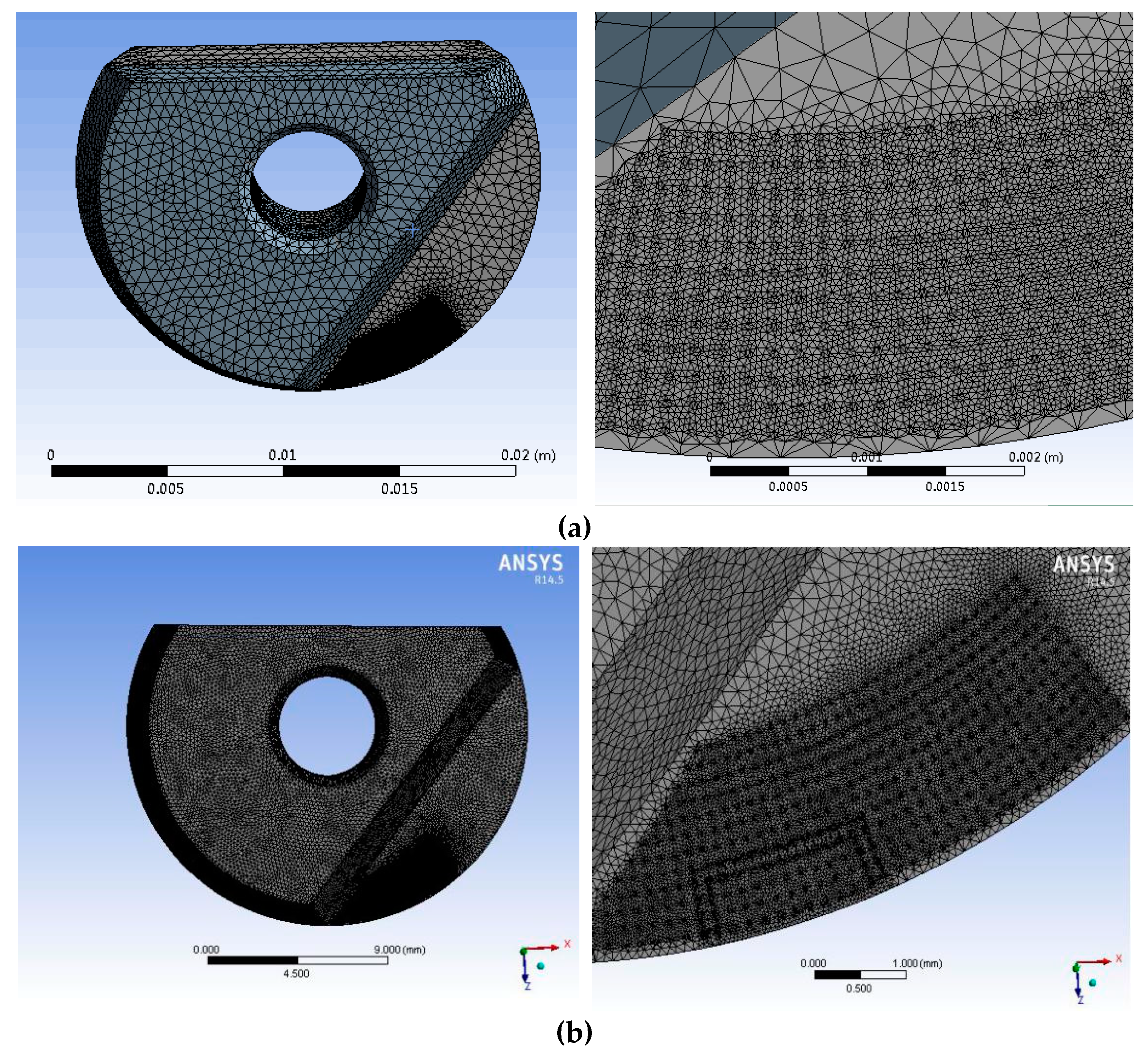

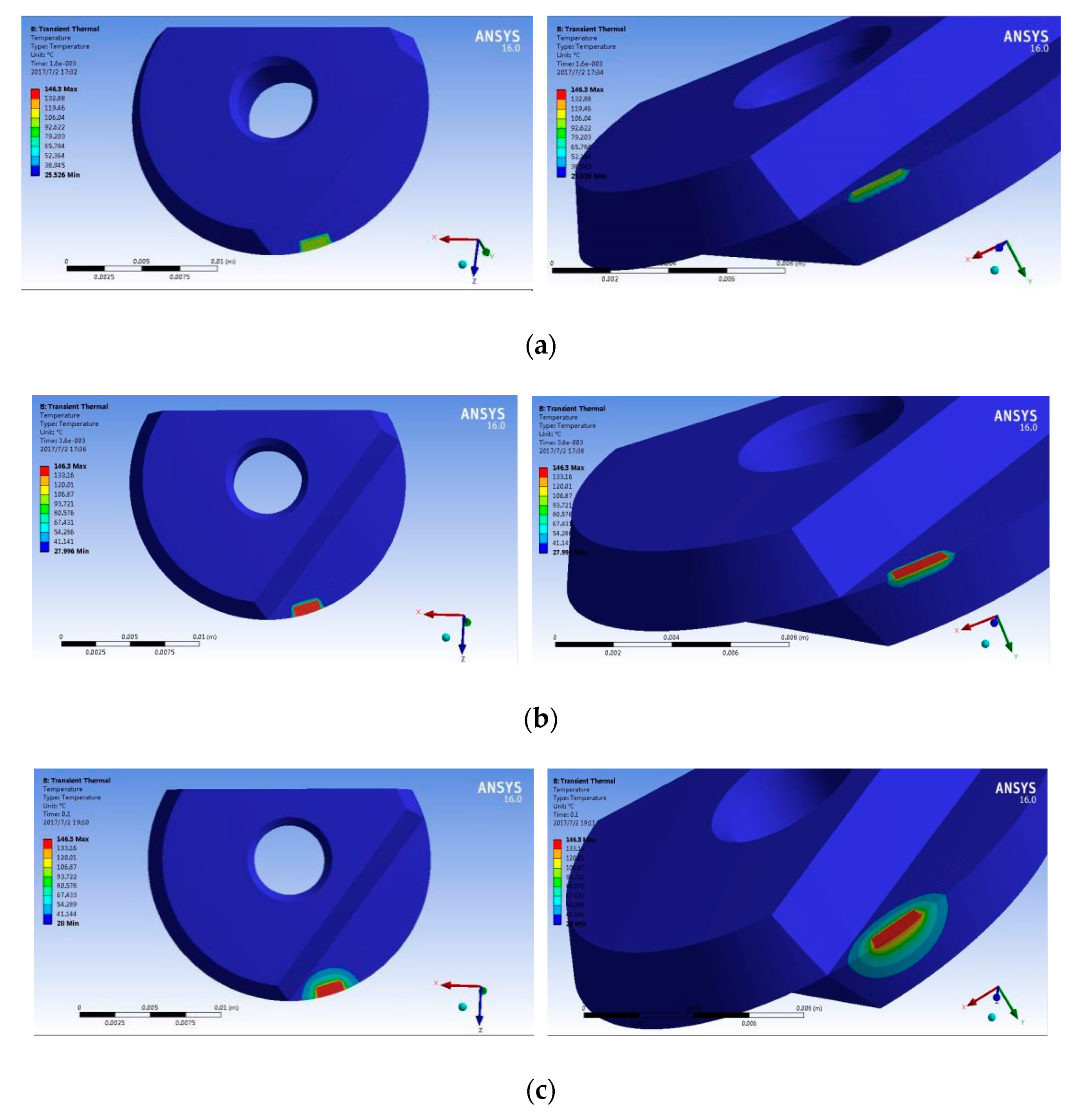

| Cutting Parameter | Cutting Speed vc (m/min) | Cutting Depth ap (mm) | Feed Rate f (mm/z) | |
|---|---|---|---|---|
| Number | ||||
| 1 | 120 | 0.70 | 0.04 | |
| 2 | 0.06 | |||
| 3 | 0.08 | |||
| 4 | 0.10 | |||
| 5 | 120 | 0.70 | 0.08 | |
| 6 | 140 | |||
| 7 | 160 | |||
| 8 | 180 | |||
| Acquisition Time within the Milling Cycle (s) | Milling Temperature (°C) |
|---|---|
| 0.0004 | 48.693 |
| 0.0008 | 68.425 |
| 0.0012 | 91.244 |
| 0.0016 | 103.481 |
| 0.002 | 111.185 |
| 0.0024 | 118.475 |
| 0.0028 | 133.674 |
| 0.0032 | 141.586 |
| 0.0036 | 146.301 |
| Variable | Dimension |
|---|---|
| The average temperature θ | |
| Cutting speed vc | Lt−1 |
| Cutting depth ac | L |
| Heat capacity of volume ρc and thermal conductivity coefficient λ | M2t−5−2 |
| Specific cutting energy u | ML−1·t−2 |
| Variable | Dimensional Unit |
|---|---|
| Cutting speed vc | m/s |
| Feed engagement af | m/z |
| Cutting depth ac | m |
| Cutting width ae | m |
| Tool diameter D | m |
| Thermal conductivity of the workpiece material λ | W/(m·K) |
| Workpiece material density ρ | kg/m3 |
| Specific cutting energy of the workpiece material c | J/(kg·K) |
| Variable | Numerical Value | Dimensional Unit |
|---|---|---|
| Cutting speed vc | 2 | m/s |
| Feed engagement af | 0.00008 | m/z |
| Cutting depth ac | 0.00007 | m |
| Cutting width ae | 0.00005 | m |
| Tool diameter D | 0.02 | m |
| Tensile strength | 0.895 | GPa |
| Thermal conductivity of the workpiece material λ | 15.24 | W/(m·K) |
| Workpiece material density ρ | 4.5 × 103 | kg/m3 |
| Specific heat capacity of the workpiece material c | 611 | J/(kg·K) |
| Density kg/m3 | Thermal Conductivity (W/(m·°C)) | Coefficient of Thermal Expansion α (×10−6·°C−1) | Modulus of Elasticity E(GPa) | Poisson Ratio | Specific Heat Capacity C(J/(kg·°C)) | Melting Point °C | Boiling Point °C |
|---|---|---|---|---|---|---|---|
| 14,700 | 75.4 | 4.5 | 540 | 0.3 | 470 | 2780 | 6000 |
© 2018 by the authors. Licensee MDPI, Basel, Switzerland. This article is an open access article distributed under the terms and conditions of the Creative Commons Attribution (CC BY) license (http://creativecommons.org/licenses/by/4.0/).
Share and Cite
Yang, S.; He, C.; Zheng, M.; Wan, Q.; Zhang, Y. Temperature Field of Tool Engaged Cutting Zone for Milling of Titanium Alloy with Ball-End Milling. Micromachines 2018, 9, 672. https://doi.org/10.3390/mi9120672
Yang S, He C, Zheng M, Wan Q, Zhang Y. Temperature Field of Tool Engaged Cutting Zone for Milling of Titanium Alloy with Ball-End Milling. Micromachines. 2018; 9(12):672. https://doi.org/10.3390/mi9120672
Chicago/Turabian StyleYang, Shucai, Chunsheng He, Minli Zheng, Quan Wan, and Yuhua Zhang. 2018. "Temperature Field of Tool Engaged Cutting Zone for Milling of Titanium Alloy with Ball-End Milling" Micromachines 9, no. 12: 672. https://doi.org/10.3390/mi9120672





